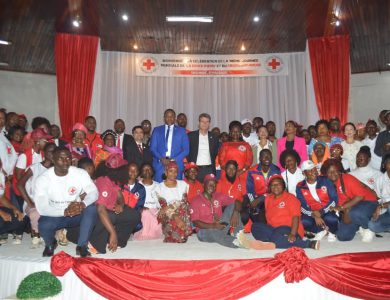Information from Cameroon’s Ministry of Public Health indicates that, since the beginning of 2024, Cameroon has recorded 30 suspected cases of Mpox, with five confirmed and two deaths.
It is reported that outbreaks are mainly in the South West Region (Mbonge, Buea, and Limbe districts) and North West Region (Njikwa and Bamenda districts).
Following the resurgence of the disease in the DRC and other African countries after the episodes of July 2022 to May 2023, the Director of the WHO declared Mpox a “public health emergency of international concern” on 14th August 2024.
Accordingly, the Government of Cameroon through the Ministry of Public Health is putting up a strong front to control the spread or importation of this disease from neighbouring countries already greatly affected.
Speaking in a press release on 16th August 2024, the Minister of Public Health, Manaouda Malachie highlighted, “Epidemiological surveillance has been strengthened in risk areas, particularly epidemic regions and health districts bordering the CAR.
Investigations and active search for cases and contact persons in epidemic health districts are continuing. Awareness-raising and community mobilization activities are also being strengthened.”
In May 2023, there were 10 confirmed cases of mpox in Cameroon in the Foe Bakundu and Kumba health districts in the South West Region, an increase from two confirmed cases in the same health districts in October 2022.
About Mpox
The World Health Organisation defines Mpox (formerly called Monkeypox) as an infectious disease caused by the monkeypox virus.
“It can cause a painful rash, enlarged lymph nodes and fever. Most people fully recover, but some get very sick,” the WHO website indicates.
The virus was discovered in Denmark in 1958 in monkeys kept for research.
The first reported human case of the virus was on a nine-month-old boy in the Democratic Republic of the Congo (Former DRC) in 1970.
Transmission Routes
Monkeypox has two major transmission routes: person-to-person and animal to person.
Person-to-person transmission of monkeypox can occur through:
– face-to-face (talking or breathing)
– skin-to-skin (touching or sex)
– mouth-to-mouth (kissing)
mouth-to-skin contact (oral sex or kissing the skin)
– respiratory droplets
Animal-to-human transmission of monkeypox can happen through bites or scratches or during activities like hunting, skinning, trapping, cooking, handling dead animals or eating animals.
The WHO further indicates that people can contract monkeypox from contaminated objects like clothing or beddings, injuries with sharp objects or even while doing tattoos.
Symptoms of Monkeypox
– fever
– sore throat
– headache
– muscle aches
– back pain
– low energy
– swollen lymph nodes
Preventive Measures
The WHO recommends the following measures to prevent Monkeypox:
– stay home and in your own room if possible (isolation)
– wash hands often with soap and water or use hand sanitizer, especially before or after touching sores
– wear a mask and cover lesions when around other people until your rash heals
– keep skin dry and uncovered (unless in a room with someone else)
– avoid touching items in shared spaces and disinfect shared spaces frequently
– use saltwater rinses for sores in the mouth
– take sitz baths or warm baths with baking soda or Epsom salts for body sores
– take medications for pain like paracetamol or ibuprofen.
– do not burst blisters or scratch sores as this can slow healing, spread the rash to other parts of the body and cause sores to become infected.
– do not shave areas with sores until scabs have healed and you have new skin underneath as this can spread the rash to other parts of the body.










